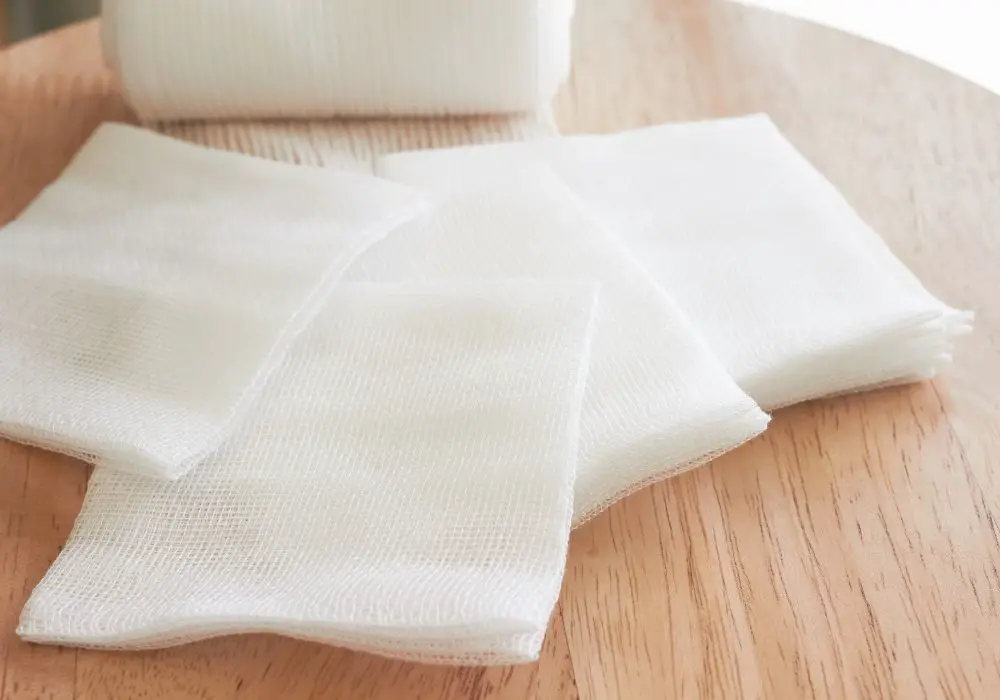If you’ve recently had a tooth extraction, you’re probably wondering what materials you can use to help with the healing process. Gauze is commonly used to control bleeding and promote clotting after the procedure. However, you may be wondering if cotton can be used instead of gauze.
While cotton balls may seem like a convenient alternative to gauze, it’s important to note that they are not recommended for post-tooth extraction care. Cotton fibers can easily become lodged in the extraction site, leading to infection and prolonging the healing process. Additionally, cotton balls are not as absorbent as gauze, which can lead to increased bleeding and discomfort.
If you’re unsure about what materials to use after a tooth extraction, it’s always best to consult with your dentist or oral surgeon. They can provide you with specific instructions and recommendations for post-operative care. By following their advice and using the appropriate materials, you can ensure a smoother and more comfortable recovery process.
Understanding Tooth Extraction

Why Tooth Extraction is Performed
Tooth extraction is a dental procedure that involves the removal of a tooth from its socket in the jawbone. This procedure is usually performed when a tooth is severely damaged beyond repair or when it poses a risk to your oral health. Here are some common reasons why tooth extraction is performed:
- Severe tooth decay
- Gum disease
- Tooth infection
- Impacted wisdom teeth
- Crowded teeth
- Orthodontic treatment
The Extraction Process
Tooth extraction is a relatively simple procedure, but it is important to understand what to expect before, during, and after the procedure. Here is a brief overview of the extraction process:
- Local anesthesia is administered to numb the area around the tooth.
- The tooth is loosened from its socket using a dental tool called an elevator.
- Once the tooth is loose, forceps are used to gently remove it from the socket.
- Gauze is placed over the extraction site to control bleeding and promote clotting.
- You will be given post-operative instructions to follow, including how to care for the extraction site and manage any discomfort.
It is important to follow your dentist’s instructions carefully to ensure proper healing and prevent complications. In the next section, we will discuss the aftercare process in more detail.
Cotton Vs Gauze After Extraction

When it comes to post-tooth extraction care, one of the most important things to consider is the type of material you use to control bleeding. While gauze is the most commonly used material, some people may wonder if cotton can be used instead. In this section, we will compare the properties of cotton and gauze to help you make an informed decision.
Properties of Cotton
Cotton is a soft, absorbent material that is commonly used in a variety of medical applications. Some people may prefer to use cotton instead of gauze after a tooth extraction because it is more readily available and may be more comfortable to use.
However, it is important to note that cotton does not have the same level of absorbency as gauze. This means that it may not be as effective at controlling bleeding. Additionally, cotton fibers may become stuck in the extraction site, which can lead to complications such as infection or dry socket.
Properties of Gauze
Gauze is a thin, woven material that is specifically designed for medical use. It is highly absorbent and is often used to control bleeding after procedures such as tooth extractions.
One of the main advantages of using gauze after a tooth extraction is its absorbency. Gauze is able to quickly and effectively soak up blood, which can help to prevent complications such as dry socket. Additionally, gauze is less likely to become stuck in the extraction site, which can reduce the risk of infection.
Overall, while cotton may be a more comfortable option, gauze is generally the preferred material for controlling bleeding after a tooth extraction. Its high absorbency and low risk of complications make it the best choice for promoting proper healing.
Possible Risks and Complications
When it comes to tooth extraction aftercare, it’s important to follow your dentist’s instructions closely to avoid any complications. Using cotton instead of gauze after tooth extraction can lead to certain risks and complications that you should be aware of.
Risks of Using Cotton
Cotton balls or swabs are not recommended for use after tooth extraction as they can easily become lodged in the extraction site and delay the healing process. In addition, cotton fibers can stick to the wound and cause further irritation or infection. Using cotton can also lead to excessive bleeding, which can be difficult to control.
Risks of Using Gauze
While gauze is the recommended material for post-extraction care, there are still some risks associated with its use. If the gauze is not changed frequently enough, it can become saturated with blood and bacteria, leading to infection. Leaving gauze in the mouth for too long can also cause dry socket, a painful condition that occurs when the blood clot that forms in the socket is dislodged or dissolves before the wound has had a chance to heal.
To minimize the risks of using gauze, make sure to change it every 30-45 minutes or as directed by your dentist. Use a fresh piece of gauze each time to prevent the buildup of bacteria. If you experience excessive bleeding or pain, contact your dentist immediately.
In summary, while it may be tempting to use cotton instead of gauze after tooth extraction, it’s important to follow your dentist’s instructions and use the recommended materials to avoid any potential risks or complications.
Professional Recommendations

When it comes to post-tooth extraction care, it is crucial to follow professional recommendations to ensure a smooth and speedy recovery. Here are some insights from dentists and scientific research findings on whether cotton can be used instead of gauze after tooth extraction.
Dentists’ Opinions
Most dentists do not recommend using cotton instead of gauze after tooth extraction. The reason for this is that cotton fibers can easily get stuck in the extraction site, leading to an increased risk of infection and delayed healing. Additionally, cotton does not provide the same level of pressure as gauze, which is essential for controlling bleeding and promoting blood clot formation.
Dentists recommend using sterile gauze pads that are specifically designed for post-tooth extraction care. These pads are made from a non-woven material that does not shed fibers, making them less likely to get stuck in the extraction site. Additionally, gauze pads are more absorbent than cotton, which helps to control bleeding and reduce the risk of infection.
Scientific Research Findings
Scientific research has also shown that gauze is a more effective option than cotton for post-tooth extraction care. A study published in the Journal of Oral and Maxillofacial Surgery found that using gauze was associated with a lower risk of postoperative bleeding and infection compared to using cotton. The study also found that gauze was more effective at promoting blood clot formation and reducing the need for additional interventions.
Another study published in the Journal of Dental Research found that gauze was more effective at absorbing blood than cotton. The researchers concluded that using gauze was a more effective way to control bleeding and promote healing after tooth extraction.
In summary, while cotton may seem like a convenient alternative to gauze, it is not recommended by dentists or supported by scientific research. Using sterile gauze pads specifically designed for post-tooth extraction care is the best way to ensure a smooth and speedy recovery.
Frequently Asked Questions
How long should I use cotton after tooth extraction?
It is not recommended to use cotton after tooth extraction. Your dentist will provide you with gauze to promote clotting and stop bleeding. Follow your dentist’s instructions for how long to use the gauze.
What can I use instead of gauze for tooth extraction?
It is best to use gauze provided by your dentist. However, if you are unable to use gauze, you can use a clean, damp cloth to apply pressure to the extraction site.
Can I put cotton on my extracted tooth?
No, you should not put cotton on your extracted tooth. Your dentist will provide you with gauze to promote clotting and stop bleeding.
Can I use paper towel instead of gauze for tooth extraction?
No, it is not recommended to use paper towel instead of gauze for tooth extraction. Paper towel can break apart and leave behind small pieces that can interfere with the healing process. Use gauze provided by your dentist.
When can I start rinsing with salt water after tooth extraction?
Your dentist will provide you with instructions on when to start rinsing with salt water after tooth extraction. Follow your dentist’s instructions carefully to promote proper healing.
Can I eat if my tooth extraction is still bleeding?
It is best to avoid eating until the bleeding has stopped. Stick to soft foods and avoid using straws or anything that may dislodge the blood clot. If the bleeding persists, contact your dentist for further instructions.







